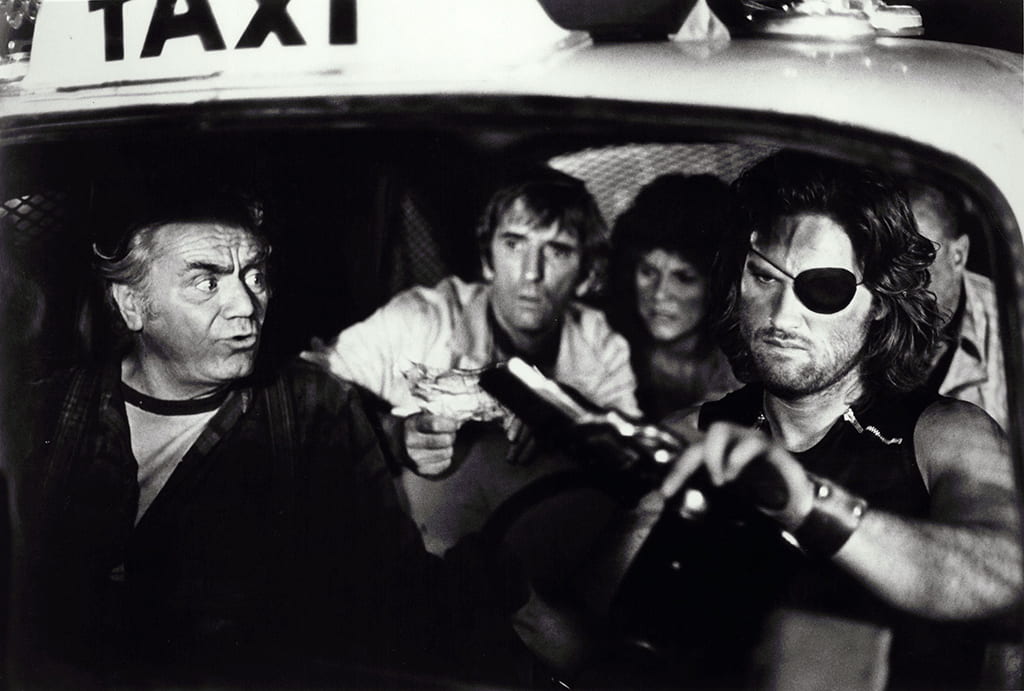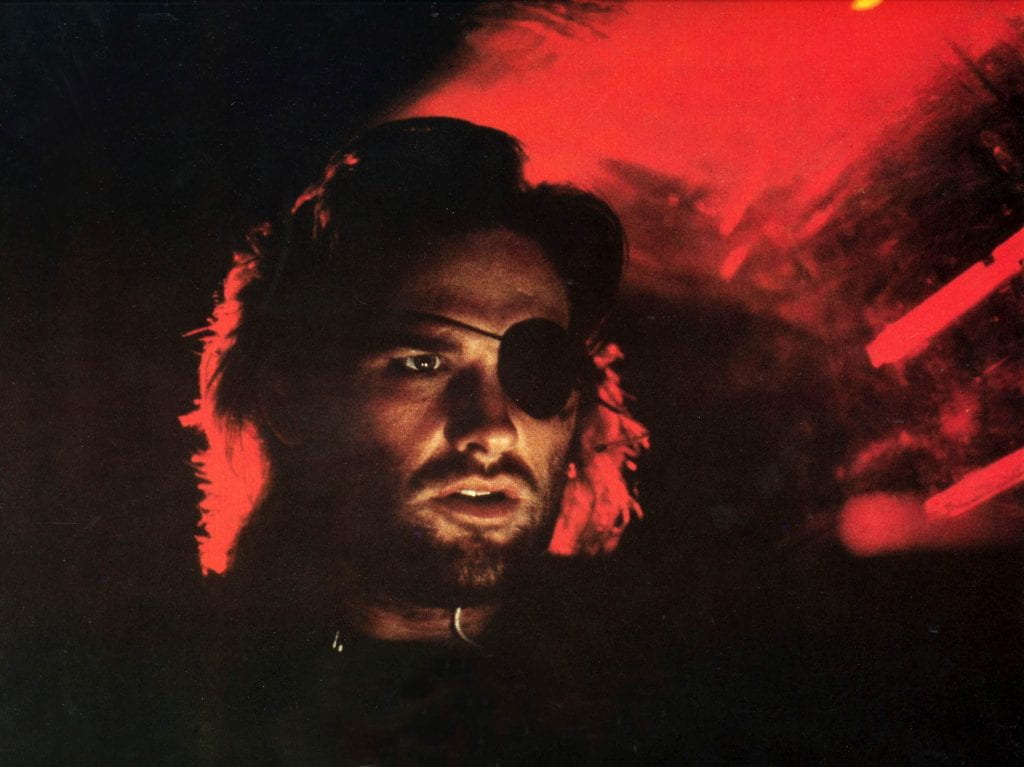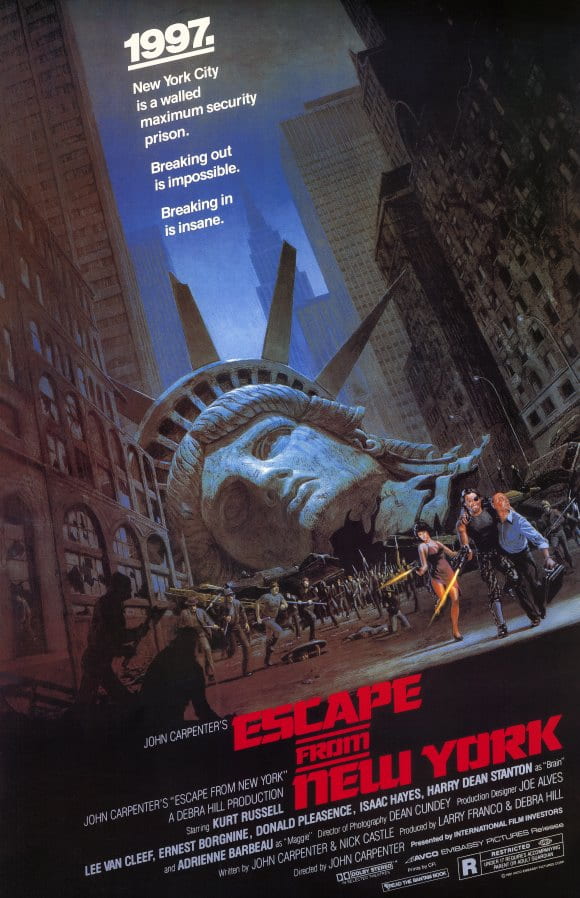
That was the headline printed on the front page of the October 30th, 1975 issue of the New York Daily News. In reality, President Gerald Ford never spoke those words, but a citizen of New York City could see that the sentiment was still there. In 1975 New York was on the brink of bankruptcy and President Ford vowed to veto any bill that would give New York the bailout it needed to stay on its feet. He likened New York’s spending to an “insidious disease.” While Ford claimed that if the city defaulted he would see that “essential public services” would continue, his top economic adviser, L. William Seidman, stated that public schooling was not on this list of essentials.
You can see why a journalist would take that as “Drop Dead.”

When John Carpenter sat down to write Escape From New York in 1976 he was influenced by Michael Winner’s Death Wish. Carpenter has stated that he “didn’t agree with the philosophy of it,” referring to Death Wish‘s right wing hero taking the law into his own hands, but the idea of “New York as a kind of jungle” was appealing to him. Mix in a healthy dose of mistrust of the president after the Watergate scandal (which Carpenter himself credits as the catalyst for Escape From New York) and a dash of dystopian Sci-Fi and you have a recipe for a tale of nihilism and skepticism of authority taken to its extreme.
The story of Escape From New York itself is pure pulp. The year is 1997 and the entire city of New York has been turned into a maximum security prison after national crime rates rise 400% in 1988. Prisoners are kept on the walled off island of Manhattan. The President (played by Donald Pleasance) is carrying a tape with the secret to nuclear fission on his way to a peace summit when Air Force One is hijacked over Manhattan. New York Police Commissioner Bob Hauk (the legendary Lee Van Cleef) enlists the help of former decorated war hero and freshly convicted criminal Snake Plissken (Kurt Russell in an iconic performance). The deal? If Snake rescues the president in 24 hours he will be given a full pardon for all of his past crimes. The catch? Snake is unknowingly injected with bombs—also set to go off in 24 hours—that will only be neutralized with the success of his mission. Is Snake Plissken a bad enough dude to rescue the president?
That description might have the film read like it’s just a tense thriller, but Escape From New York is a great piece of satirical science fiction. Like any good science fiction narrative, it magnifies the fears, concerns, and issues of the time it was created in. In science fiction you magnify the issue by asking the simple question: “what if?”
What if crime, police corruption, and totalitarianism got so out of hand that an entire city was filled with nothing but convicted criminals left there to rot for life, no matter how small the crime? In Escape From New York the police force resembles a futurist fascist force of oppressors, who occupy Liberty Island (now called Liberty Island Security Control). Emma Lazarus’s famous inscription at the base of the Statue of Liberty reading “Give me your tired, your poor, /Your huddled masses yearning to breathe free” is now a mockery of what it once stood for. The prisoners in this fictional Manhattan are huddled, but the air is no longer free. In 1981 overcrowding in prisons wasn’t as big of a concern, but the film correctly predicted that by the late 80’s the number of people imprisoned would start climbing at an accelerated rate thanks to the war on drugs. Mass imprisonment is a harsh reality in the modern day as well. This can be evidenced in Ava DuVernay’s most recent documentary, 13th. 13th is about the unforeseen consequences the 13th Amendment has on America’s criminal justice system and prison population (specifically pertaining to African Americans). The film opens with the stark fact that America is home to 5% of the world’s population but 25% of the world’s prisoners (2.3 million people). This is enough people to easily fill up the Island of Manhattan. As far as the distrust and corruption of authority, take your pick. Cops are shooting unarmed black men and children with no repercussions, women are struggling to have legal control of their own bodies, and politicians and presidents sign bills into law that put more people in prison while being slow to help (if at all) communities and people in need.

What if America’s greatest city and melting pot became a bombed out ruin? A poster for the film used a striking image: the Statue of Liberty’s head detached from its body lying in the middle of the street with violence and gunfire surrounding its resting placing. This image signals to the viewers that liberty has been violently killed. This imagery of smoldering ruins weaves itself throughout the whole film all the way down to its shooting locations. Most of the production took place in various locations in Southern California and there’s exactly one shot in the whole film that was shot on location in New York (a brief view of Liberty Island with the Statue of Liberty in frame). A good chunk of the movie was filmed in St Louis, MO (the city and the failure of its public housing is the subject of the documentary, The Pruitt-Igoe Myth) in the burned down neighborhood blocks that the city couldn’t afford to rebuild. It is a case of art using real life to get its message across. The imagery comes through loud and clear with the help of Joe Alves’ apocalyptic production design and Dean Cundey’s suffocatingly dark photography and lighting.
What if it were possible to get back at the system on the largest scale possible? Snake is the hero of the story, but he’s a hero who’s long ago given up on on anyone else (especially those in charge of the system). When the audience meets Snake at the beginning of the film, he’s deserted any sort of code of ethics. He’s a convicted bank robber who doesn’t care about saving the leader of the free world, even if it means the end of the world itself. Only when he’s offered a deal of a lifetime does he consider it an option. Snake is the quintessential ‘70s Hollywood anti-hero: a troubled man, who stands for himself and is rebelling against the system he abandoned, subverting it whenever he gets a chance. At the end of the film Snake subverts the system in a big way. I won’t spoil the ending here, but after the president fails to show a modicum of compassion for the numerous lives that were sacrificed for his safe return, Snake essentially pranks the Commander-in-chief, making him look like an idiot to the superpowers around the world. Snake’s final act is a potentially costly one, but it illustrates how people undercut the system to make a point to the powers that be. People make satire and mock those with authority all time. Be it political comic strips, unflattering impressions of the president, or making a dystopian film about the world in shambles, people crave seeing the forces in charge challenged in a critical and insurgent manner. Snake Plissken does this on the largest scale he possibly can.
Escape From New York asks the audience to stare at the hard truths of the world they are currently living in and to look at it through a dark, distorted lens. The figures are familiar, but everything is a little shadier and much more grotesque. That’s what John Carpenter did. He looked at a city in decline and saw the potential ruins that lie within. All he had to do was ask: “what if?”
Escape From New York screens on October 29, 2016 at 7:00 p.m. as part of the Sifting Through The Ruins Film Series at IU Cinema. The Pruitt-Igoe Myth screened in the same series in September.

David Carter is a film lover and a menace. He plays jazz from time to time but asks you not to hold that against him. His taste in movies bounces from Speed Racer to The Holy Mountain and everything in between.